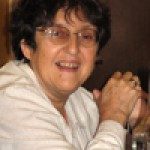Link to Pubmed [PMID] – 2665768
Immunol. Today 1989 Jan;10(1):10-4
The antigen-specific receptor of T lymphocytes (TCR) and the Fab moiety of immunoglobulins are expected to fold into similar three-dimensional structures because of their identical protein domain organization, the conservation of key residues and their overall sequence homology. However, T cells mostly appear to recognize short peptide antigens bound to MHC class I or class II presenting molecules. A complete model of the human leucocyte antigen molecule (HLA-A2) reconstructed from the alpha-carbon coordinates was used to investigate the putative organization of a TCR/peptide/HLA-A2 complex. In this article, Jean-Michel Claverie and co-workers show that the respective geometries of a Fab-like TCR structure and of the HLA-A2 antigen binding site suggest a model where the third variable regions of both chains of the TCR mainly interact with the peptide antigen, while the first and/or second less variable regions are in position for making contact with residues pointing up from the alpha 1 and alpha 2 helical regions of the HLA-A2 molecule.

